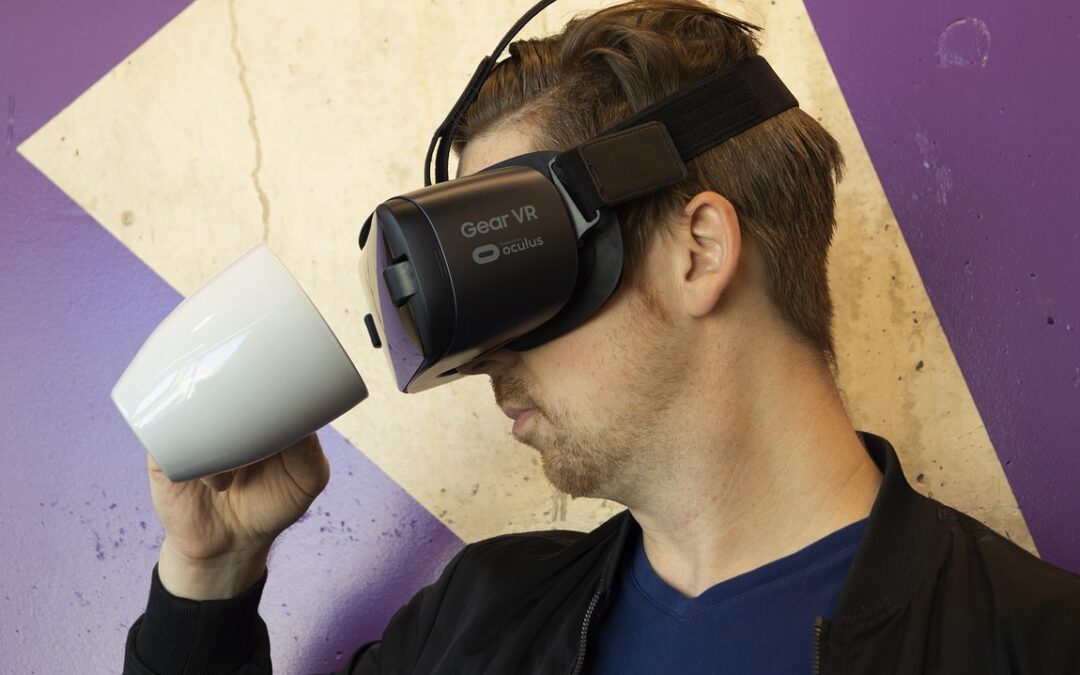Mental health treatment is a critical aspect of personal well-being and societal welfare. However, many individuals face difficulties accessing quality mental health care due to high costs, long wait times, and limited resources. The disparity in access to mental health treatment is concerning, especially considering the rising prevalence of mental health issues in today’s society. Many individuals are left struggling with their conditions, significantly negatively impacting their lives and those around them.
Mental Health and VR therapy
Virtual reality (VR) therapy offers a promising solution to the current limitations of traditional mental health treatments. With its ability to provide affordable, accessible, and effective therapy, virtual reality therapy can revolutionize mental health care and improve the well-being of individuals and society. This article will explore the potential of virtual reality therapy for mental health treatment and the challenges stakeholders must address for the technology’s wider adoption.
Basics of VR therapy
The use of virtual reality in therapy is not a new concept; it has been explored since the 1990s. However, with technological advancements, virtual reality therapy has become more accessible and affordable, making it a more viable option for mental health treatment.
Virtual reality therapy typically involves a head-mounted display (HMD) that immerses the user in a simulated environment.
The user can interact with the environment through handheld controllers, and the therapist can adjust the simulation to cater to the specific needs of the individual.
Exposure Therapy
One of the primary advantages of virtual reality therapy is the ability to create a safe and controlled environment for individuals to confront their fears and anxieties. For example, virtual reality therapy can simulate scenarios such as flying, public speaking, or even combat situations for individuals with post-traumatic stress disorder (PTSD). This type of exposure therapy is effective in reducing symptoms of anxiety disorder and PTSD.
Virtual reality therapy allows for more personalized and tailored treatment. The therapist can adjust the simulation to cater to the specific needs and preferences of the individual, making the treatment more effective and engaging. This personalized approach can reduce the stigma associated with PTSD and even traditional mental health treatments, making it more appealing for individuals hesitant to seek therapy.
VR For Specific Mental Health Conditions
Virtual reality therapy treats specific mental health conditions such as anxiety, PTSD, and phobias. According to Boeldt and colleagues (2019), virtual reality therapy allows patients to gradually confront and overcome their fears in a safe environment by creating scenarios that trigger anxiety or PTSD symptoms. For instance, the Virtual Iraq/Afghanistan exposure therapy system, developed by Rizzo et al. (2019), was found to be effective in reducing symptoms of combat-related PTSD among veterans.
Another study by Oxford VR (2020) found that virtual reality exposure therapy effectively treats social anxiety disorder. These findings suggest that virtual reality therapy can recreate challenging or impossible-to-play real-life scenarios, allowing patients to receive adequate treatment for their mental health conditions.
In addition to being practical, virtual reality therapy has several advantages over traditional treatment methods for specific mental health conditions. Based on studies, virtual reality therapy can be cost-effective compared to in-person therapy since it does not require expensive equipment or extensive training for therapists.
Furthermore, virtual reality therapy can be conducted remotely, making it more accessible to individuals with difficulty accessing traditional mental health care. These benefits of virtual reality therapy make it a promising alternative to conventional mental health treatments.
For General Mental Health and Wellness
Virtual reality therapy is not limited to treating specific mental health conditions but can promote general mental health and wellness. Virtual reality therapy can create environments that promote relaxation and stress reduction, making it useful for individuals dealing with everyday stress or looking to improve their overall mental health.
Virtual reality therapy is already being used in various parts of the world for general mental health and wellness. Researchers in New Zealand conducted a study using virtual reality exposure therapy (VRET) that significantly reduced symptoms of anxiety and depression among participants. The study created a peaceful and calming environment that allowed participants to focus on their breath and relaxation techniques. The immersive and interactive experiences of virtual reality therapy provided immediate relief to participants.
In Spain, the University of Barcelona conducted studies on virtual reality exposure to nature scenes, which reduced stress and improved mood in participants. Virtual reality environments that simulate natural settings like forests, beaches, or mountains have shown promising results in providing individuals with a sense of escape from their everyday lives and promoting relaxation and rejuvenation.
In the United States, virtual reality therapy is in use to treat post-traumatic stress disorder (PTSD) in veterans. The Virtual Reality Medical Center in San Diego uses virtual reality exposure therapy to simulate combat environments, allowing veterans to confront and overcome their traumatic experiences. The results have been significant, with many veterans experiencing decreased PTSD symptoms.
For Alleviating Social Anxiety
Virtual reality therapy is being used in Japan to address social anxiety. The treatment simulates real-life situations that trigger social tension, allowing individuals to practice social skills in a safe and controlled environment. Virtual reality therapy has shown promising results in reducing social anxiety and improving social skills.
As virtual reality technology advances and becomes more accessible, virtual reality therapy can transform mental health treatment by providing adequate and affordable medicine to a broader population. Using virtual reality therapy is not limited to treating specific mental health conditions but can be used to promote general mental health and wellness.
Potential Drawbacks and Challenges
Image by Gerd Altmann from Pixabay
While virtual reality therapy offers potential benefits, some potential drawbacks and challenges must be addressed for the broader adoption of the technology. One of the main challenges is cost, as virtual reality technology can be expensive and may not be covered by insurance. Additionally, access to virtual reality therapy may be limited for individuals needing access to the necessary equipment or the technical expertise to use it effectively.
Another potential drawback of virtual reality therapy is privacy concerns. Virtual reality therapy involves using personal information to create simulations tailored to the individual, which raises questions about data privacy and security. Additionally, there is potential for addiction or over-reliance on virtual reality therapy, potentially harming individuals who rely too heavily on the technology.
Another challenge of virtual reality therapy is the need for standardized protocols for treatment. Since virtual reality therapy is a relatively new treatment method, guidelines must be established for using the technology effectively. This lack of standardization can make it difficult for therapists to determine the appropriate dosage and duration of virtual reality therapy for their patients.
Additionally, virtual reality therapy may not be suitable for all individuals, particularly those with certain medical conditions such as epilepsy or severe motion sickness. The immersive nature of virtual reality therapy can be overwhelming for some individuals, leading to feelings of disorientation or anxiety.
Furthermore, virtual reality therapy may not be effective for everyone, and more research is needed to determine its effectiveness for different mental health conditions and populations. Mental health experts—like psychiatry and psychology degree holders—should take the initiative to conduct further VR therapy studies. Key research areas should include psychosis, eating disorders, substance abuse, PTSD, obsessive-compulsive disorder, social anxiety, and phobias.
It is important to note that virtual reality therapy should not be viewed as a replacement for traditional mental health treatment methods. Instead, it can be used as a complementary tool alongside other treatments.
Finally, there are ethical considerations, mainly about using virtual reality therapy for exposure therapy. Therapists need to ensure that the simulations used in virtual reality therapy are not overly distressing or traumatic for their patients and that patients are fully informed about the potential risks and benefits of the treatment.
The Future of VR Therapy
Despite these potential challenges, the future of virtual reality therapy looks promising. As technology continues to advance and become more accessible, virtual reality therapy has the potential to transform mental health treatment by providing adequate and affordable medicine to a broader population. Some experts predict that virtual reality therapy will soon become a standard part of mental health care.
Furthermore, ongoing research explores virtual reality therapy applications in addressing other mental health concerns, such as eating disorders, substance abuse, and obsessive-compulsive disorder. Virtual reality therapy has the potential to offer a safe and controlled environment for individuals to confront and overcome these challenges.
In addition, virtual reality therapy can be used with other treatment methods to enhance their effectiveness. For example, virtual reality therapy can supplement traditional talk therapy or medication, providing an immersive and interactive component to treatment.
Moreover, the development of virtual reality therapy raises critical ethical considerations, such as ensuring that the technology is used responsibly and with the patient’s best interests in mind. As virtual reality therapy becomes more widely adopted, it will be essential to establish guidelines and standards for its use to ensure its safety and effectiveness.
Overall, the future of virtual reality therapy is promising, with the potential to transform mental health treatment and provide innovative solutions to a range of mental health concerns. As technology advances and research expands, virtual reality therapy can become a powerful tool in promoting mental health and wellness.
VR technology can change the way we make connections
The Future of VR Therapy for Mental Health is Brighter Than Ever
Virtual reality might be the next big thing for mental health. The future of virtual reality therapy for mental health and wellness is bright. While there are potential drawbacks and challenges to address, the benefits of virtual reality therapy in treating specific mental health conditions and promoting general mental wellness are undeniable. The technology allows for immediate relief and offers immersive and interactive experiences that traditional methods cannot provide.
As virtual reality technology becomes more accessible and affordable, it has the potential to transform mental health treatment and improve the well-being of individuals and society. The future of mental health treatment looks promising with the continued advancement of virtual reality therapy.
Feature image by Eugene Capon from Pixabay



